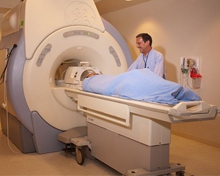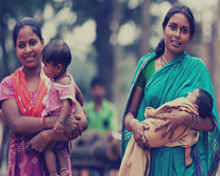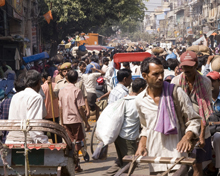Health Care Systems In India
Current Health Scenario in India
 Being healthy is a prerequisite for an honourable living and a
fundamental element to achieve great things on earth. With
increasing life expectancy, an average Indian is now willing to
engage in productive work much beyond his or her retirement age.
Being healthy is a prerequisite for an honourable living and a
fundamental element to achieve great things on earth. With
increasing life expectancy, an average Indian is now willing to
engage in productive work much beyond his or her retirement age.
But with exposure to modern ills and accustomed to a new lifestyle, one cannot keep off visiting hospitals as a range of diseases is bound to take a toll on the health system. The paradox in the healthcare delivery is quite stark in India.
On the one hand we have state-of-the-art hospitals equipped with high-tech devices in cities, while in the rural areas patients find really tough to get even the basic medical treatment as private investors are not willing to risk their capital on a region where the return on investment will be very low.
 The much touted public healthcare system has failed to deliver
the results as government finds it hard to mobilise resources to
strengthen even PHCs (primary health centres) which have a good
presence in rural India.
The much touted public healthcare system has failed to deliver
the results as government finds it hard to mobilise resources to
strengthen even PHCs (primary health centres) which have a good
presence in rural India.
While the infant mortality (40 per 1,000 live births) and morbidity rates don’t speak highly of the healthcare system put in place, the situation in backward states and regions of India is downright pathetic. The neo-natal and maternal health indices are much below average expectations from a developing country.
WHO's Ranking of the India's Healthcare Systems
 In its latest study of the healthcare systems in the world, the
WHO has ranked India at 112th out of 190 countries it had taken
up for a detailed survey. This poor show is not surprising as
the country allots just 4.2% of its GDP for healthcare spends,
of which public health spending is a mere 1.2% compared to 3 per
cent in China and 8.3 per cent in the United States.
In its latest study of the healthcare systems in the world, the
WHO has ranked India at 112th out of 190 countries it had taken
up for a detailed survey. This poor show is not surprising as
the country allots just 4.2% of its GDP for healthcare spends,
of which public health spending is a mere 1.2% compared to 3 per
cent in China and 8.3 per cent in the United States.
The Union Budget (2015) allocation of Rs 33,150 crore to the healthcare sector is no different earlier outlays. And this amount is too short of expectation of much needed increase in public health funding from the present 1.2% of GDP to 2% which was the target of the draft policy on healthcare.
Just to match up to WHO benchmark, India has to add 1.7 million beds, double its medical workforce and raise its paramedical staff three-fold. This is no easy task. What is most worrisome is that healthcare delivery is not matching up to the population growth in recent times.
Lack of Medical Facilities in India
 Nearly half the population (currently 1.28 billion) are below
the age of 25% and 65% are of 35 and below. Roughly 72% of
Indians live in 6.38 lakh villages and the rest 28% are living
in 5,480 towns and urban clusters.
Nearly half the population (currently 1.28 billion) are below
the age of 25% and 65% are of 35 and below. Roughly 72% of
Indians live in 6.38 lakh villages and the rest 28% are living
in 5,480 towns and urban clusters.
Given this alarming break-up of our population mix, the government has to work out on an urgent basis a roll-out of a healthcare network in rural areas with its own funding in order to groom health citizens for tomorrow. And the time to act on promises and policies is now or never.
Articles on Health
- Laparoscopic Surgery Advantages
- Laparoscopic Surgery History
- Laparoscopic surgery Procedures
- Limitations of traditional laparoscopic surgery
- New technologies for advance laparoscopic surgery
- Non-Robotic Laparoscopic Surgery
- Robotic Laparoscopic Surgery
- Causes and remedy for dark circles in females

- Harmful impact of mobile phone on unborn baby

- Maternal health care tips

- Rheumatoid Arthritis is Most Widespread in Female
- Periodontal ailment during Pregnancy
- Anemia is prevalent in Women
- Effect of Cell phone tower radiation on human health

- Current health scenario india
- Government health policies india
- Medical facilities india
- Hospital infrastructure india
- Shortage of Medical Professionals in India
- Quality standards indian hospitals
- Indian states health statistics
- Medical expenses india
- Hospitals in Ahmedabad
- Hospitals in Bangalore
- Hospitals in Chennai
- Hospitals in Cochin
- Hospitals in Delhi
- Hospitals in Hyderabad
- Hospitals in Kolkata
- Hospitals in Mumbai
- Hospitals in Pune
- Hospitals in Coimbatore
- Hospitals in Kochi
- Orthopaedics Hospitals in India
- Diabetology Hospitals in India
- Cardiology Hospitals in India
- Infertility Hospitals in India
- Neurology Hospitals in India
- Paediatrics Hospitals in India
- Nephrology Hospitals in India
- Oncology Hospitals in India
- Antiaging foods to improve skin

- Tips for Maintaining healthy bones
- Guidelines for preventing heart disease
- Tips to reduce eye strain while working on computer
- Mental health problems among elderly people
- Health problem of piles

- Health advices for air travel

- Dealing with Allergies
- Tips for Eyes Care
- Care for Crystal Clear Skin
- Tips For Healthy Hair
- Healthy Living is The Absolute Measure of Happiness
- Let Fragrance Rule Your Summer
- Most common vestibular disorder

- Osteoporosis Risk Factors
- Dengue

- Endocrine disorder

- Causes of liver damage
- Dry eye syndrome
- Kidney Stones
- Conjunctivitis: Irritating eye disease
- Anxiety Disorder
- Causes of Brain Damage
- Hepititis B
- Knowledge of Osteoarthritis
- Mental Illness
- Back Pain
- Sugar Addiction
- Diet Control Plans
- General Motors Diet Plan
- No Carbohydrate Diet
- One day Diet Plans
- Seven day diet Plans
- Vegetarian Diet
- Food for Health
- Genetically Modified Foods
- Healing Effects Of Fruits
- Vegetables That Heal
- Healing Effects Of Spices and Herbs
- Test your Stress Level
- Mantras for Relaxation & Stress free life
- Take walk For a healthy body and mind
- Squint is frequently observed in Children
- Consult-Doctor
- Free Handy Health Advice